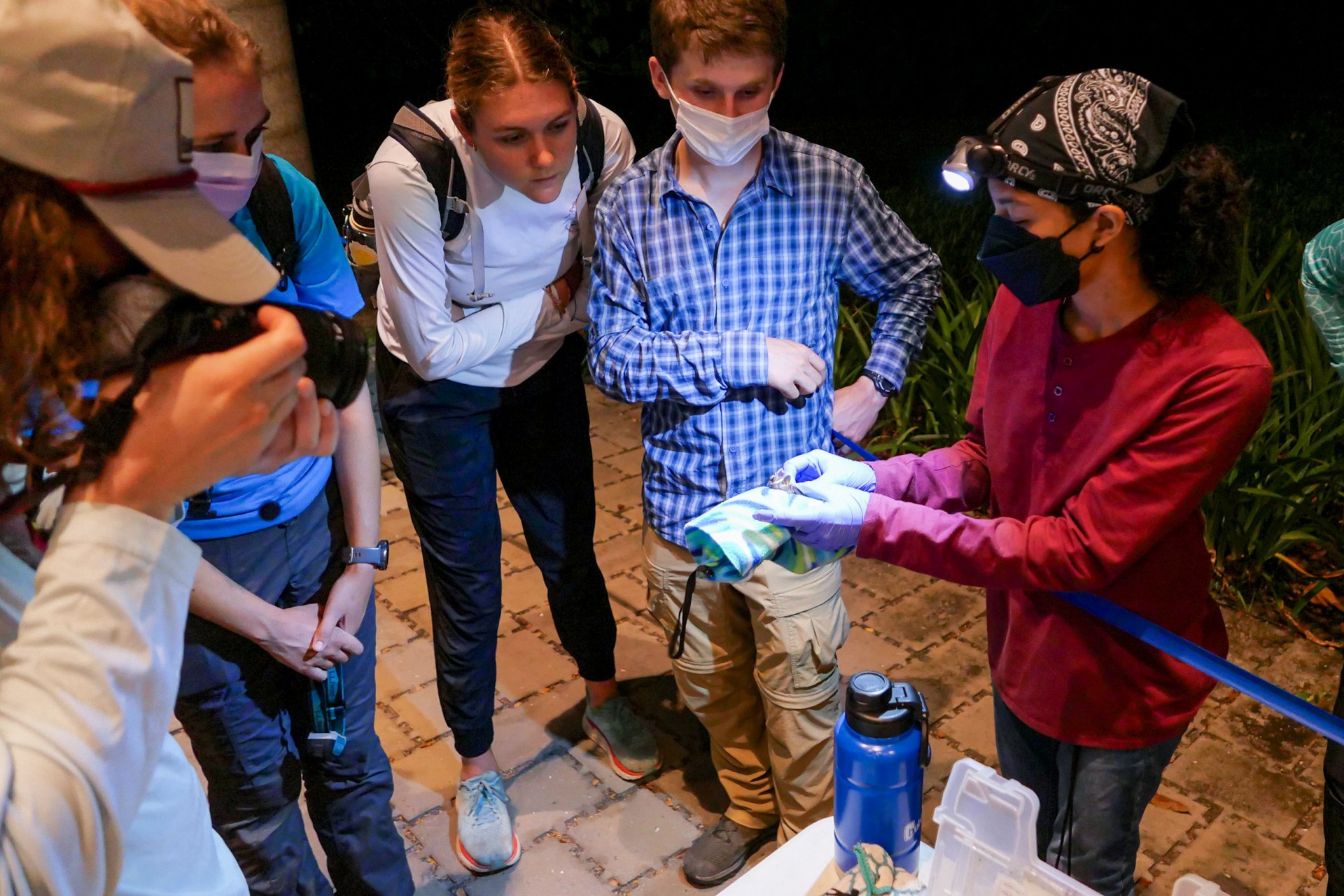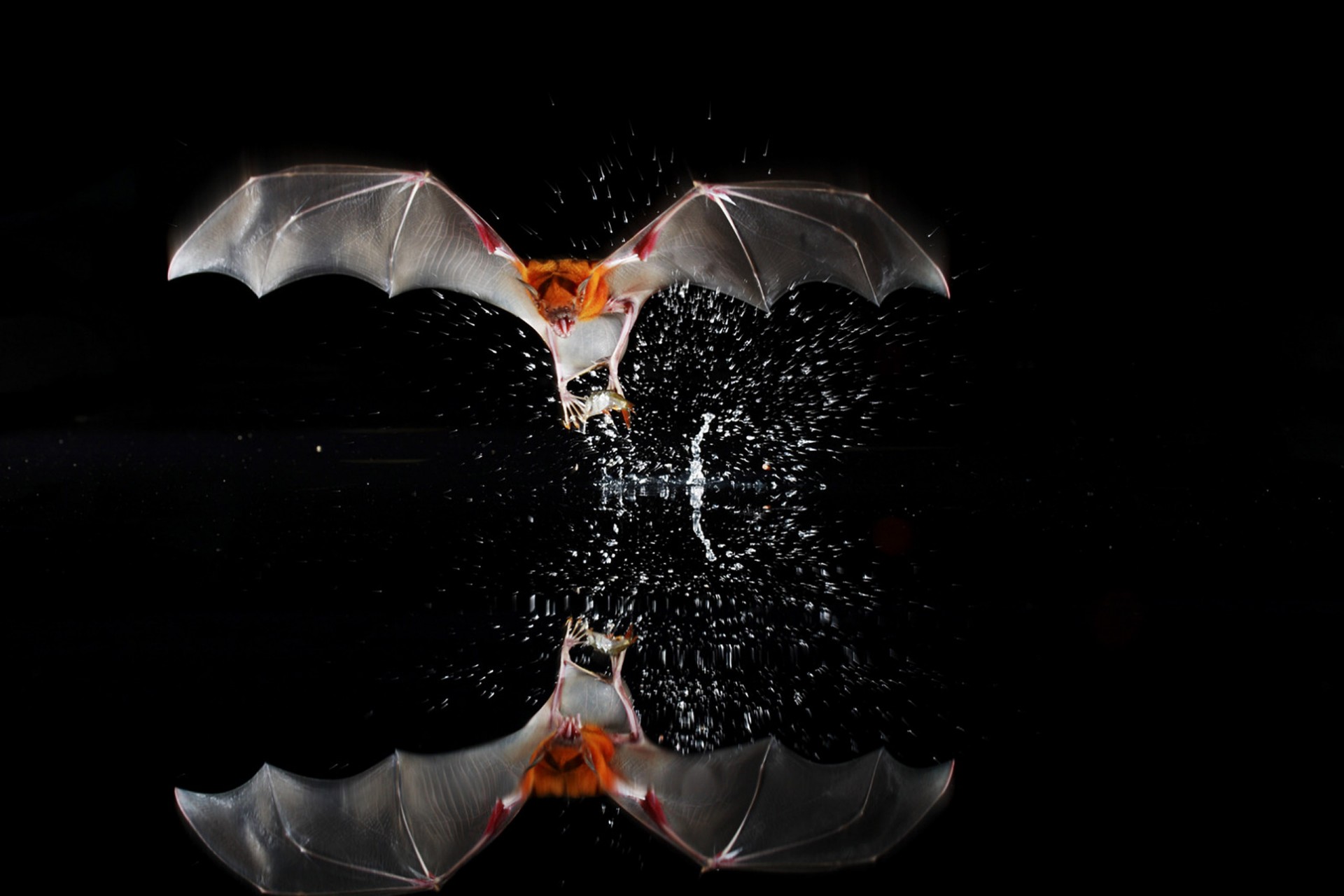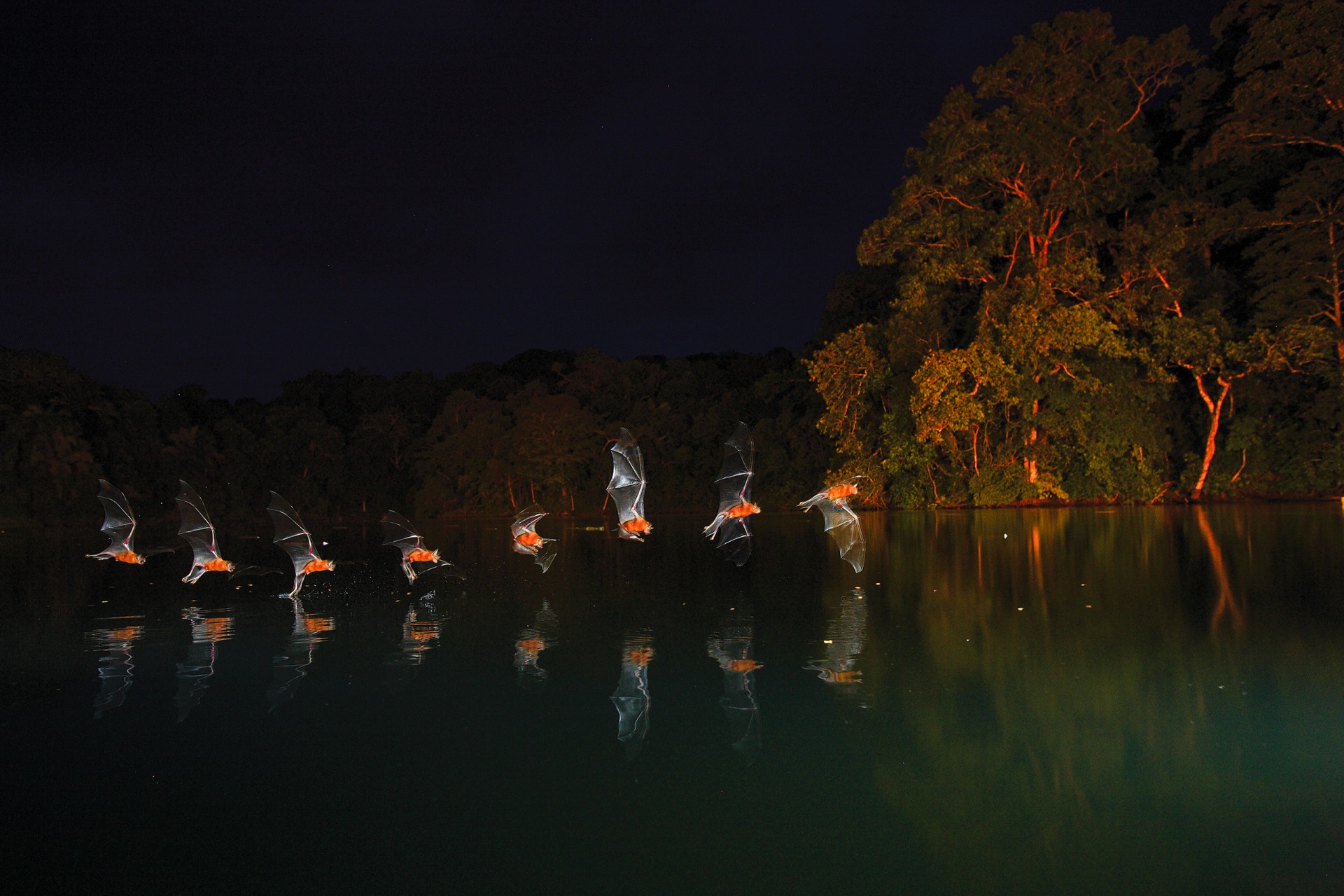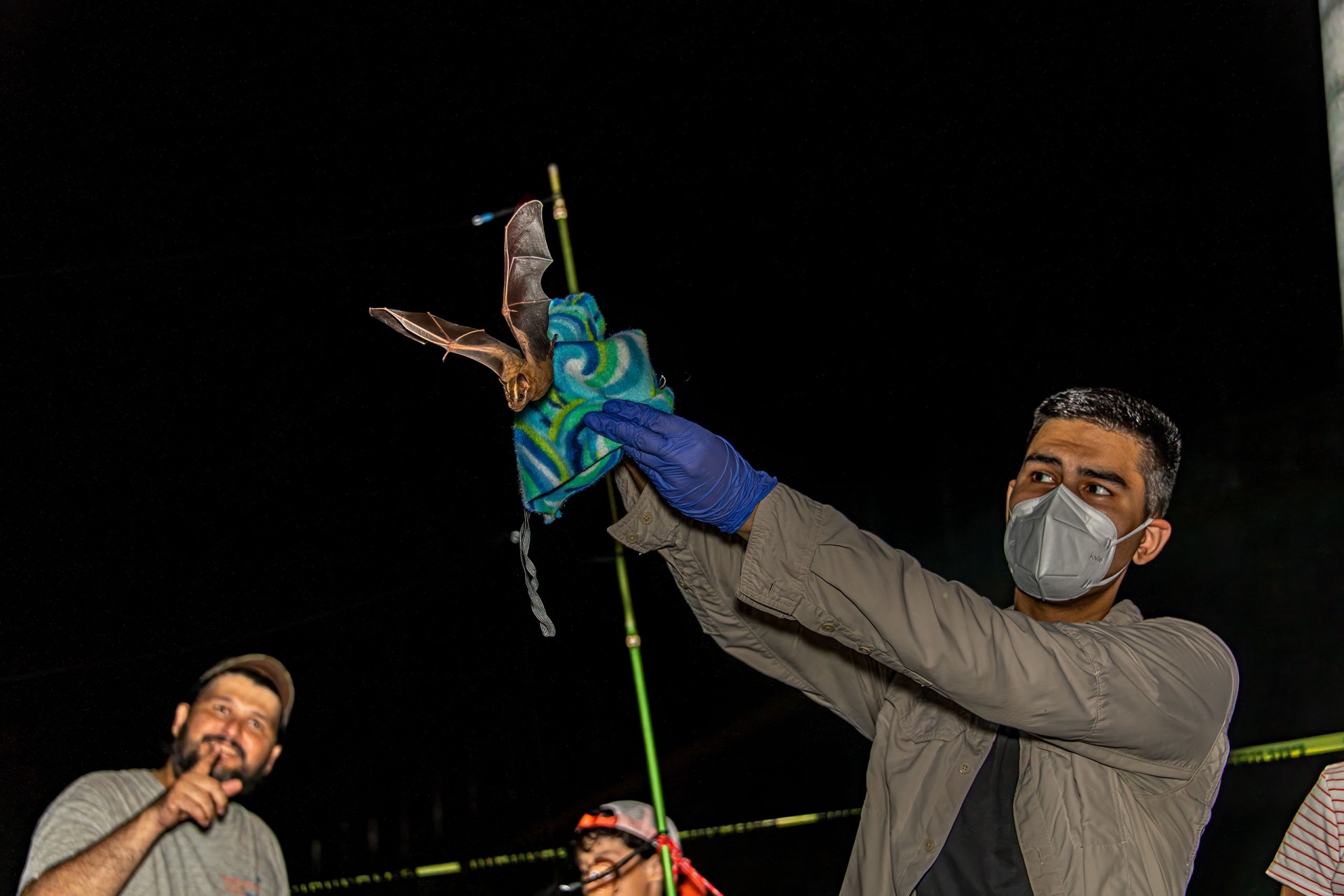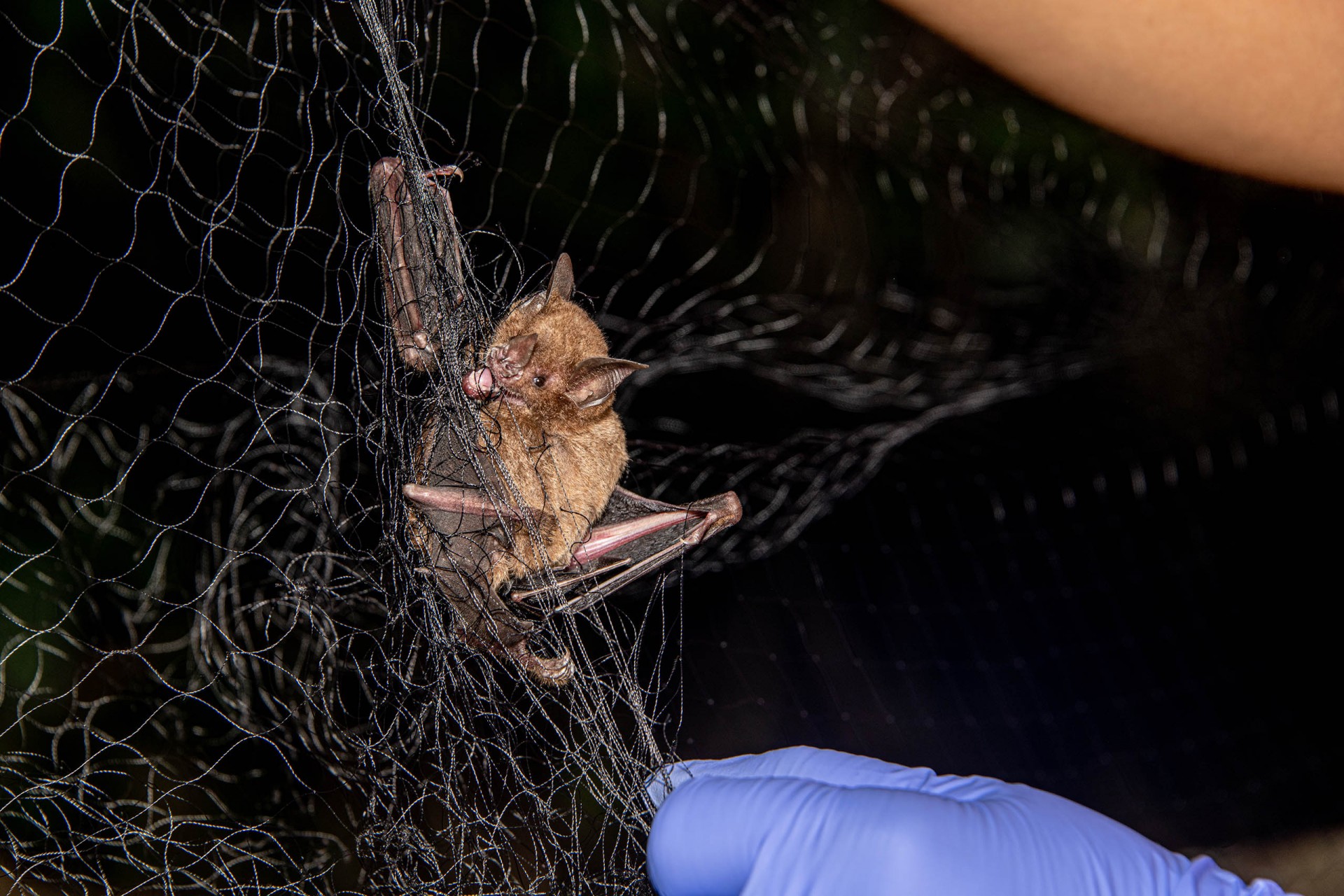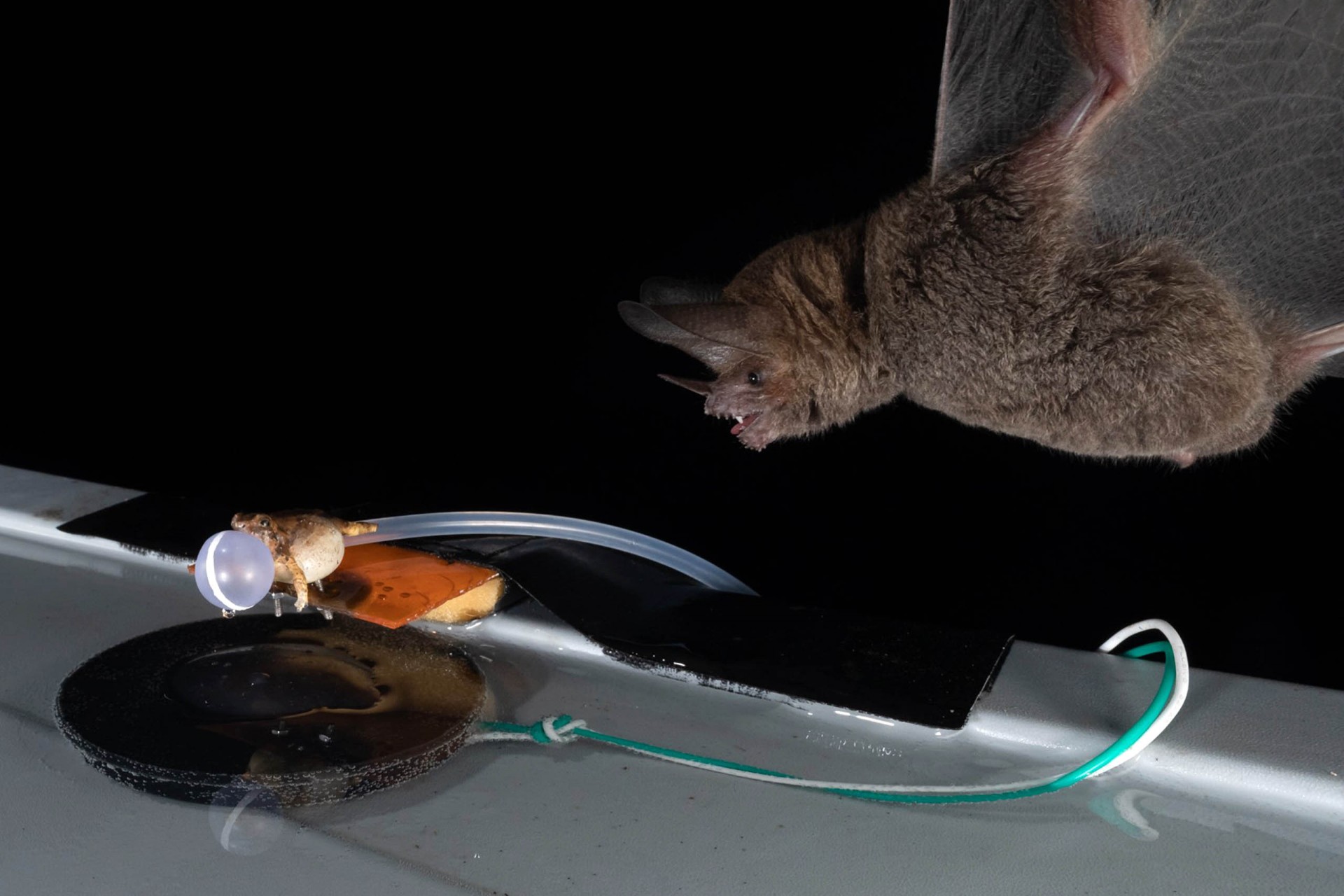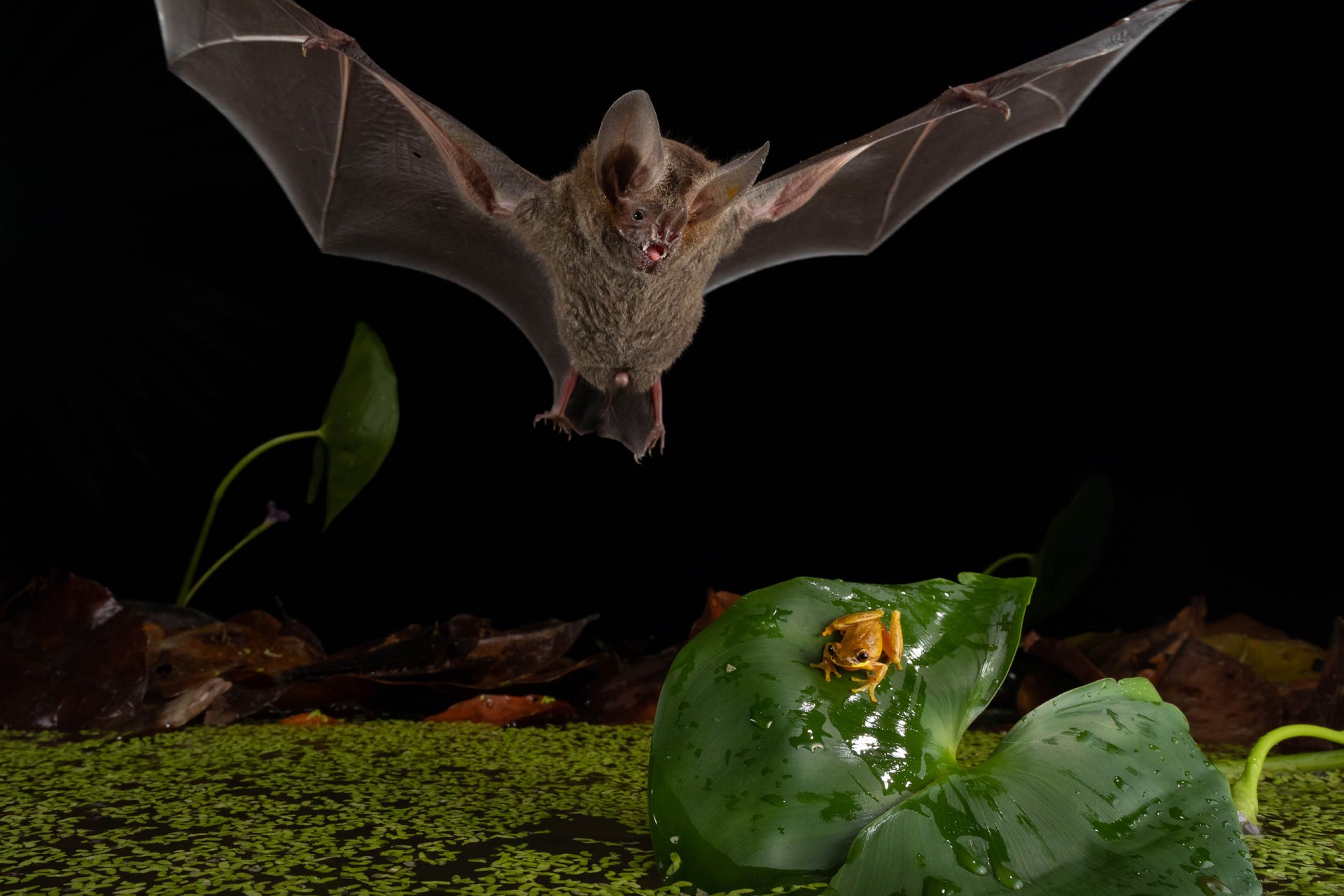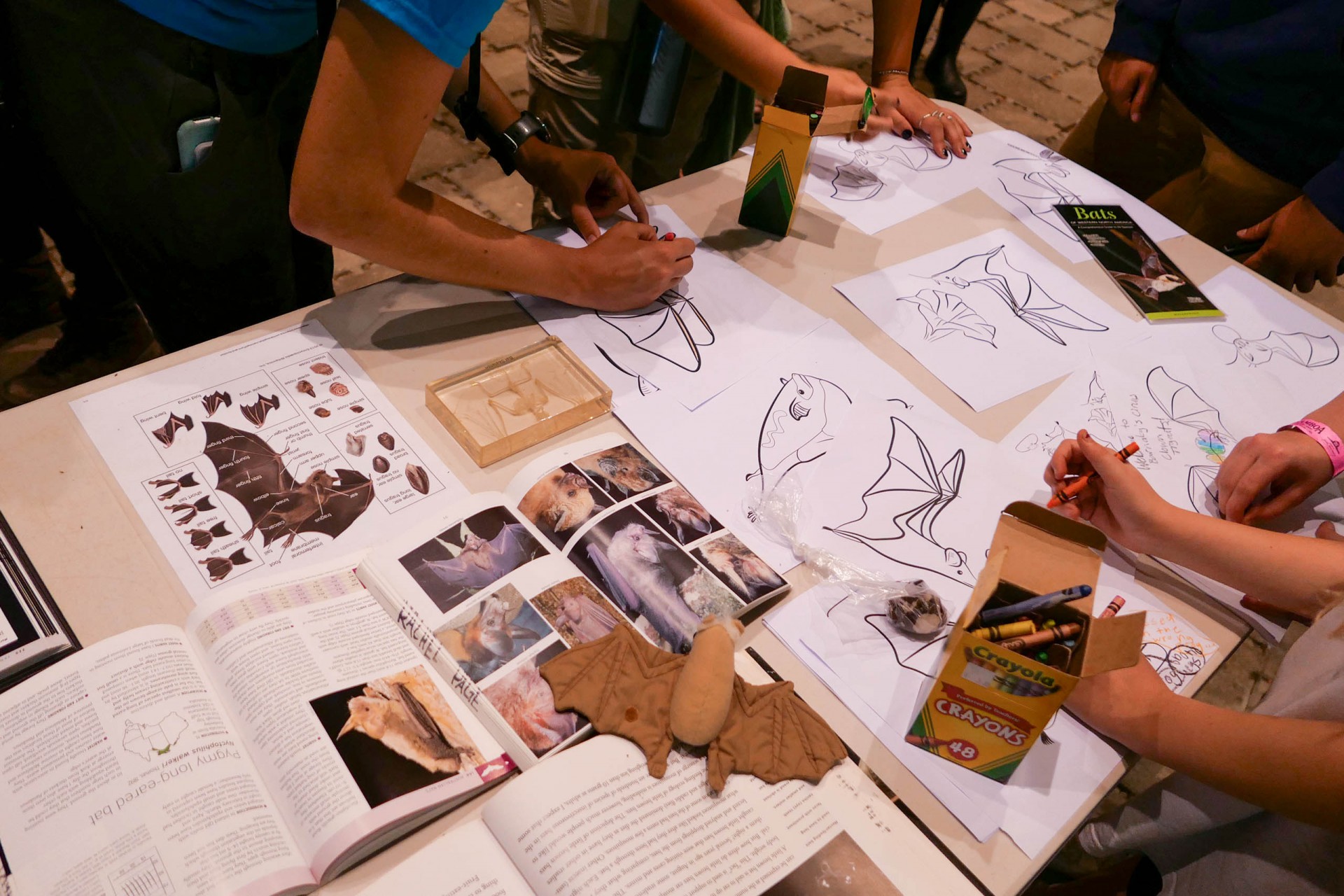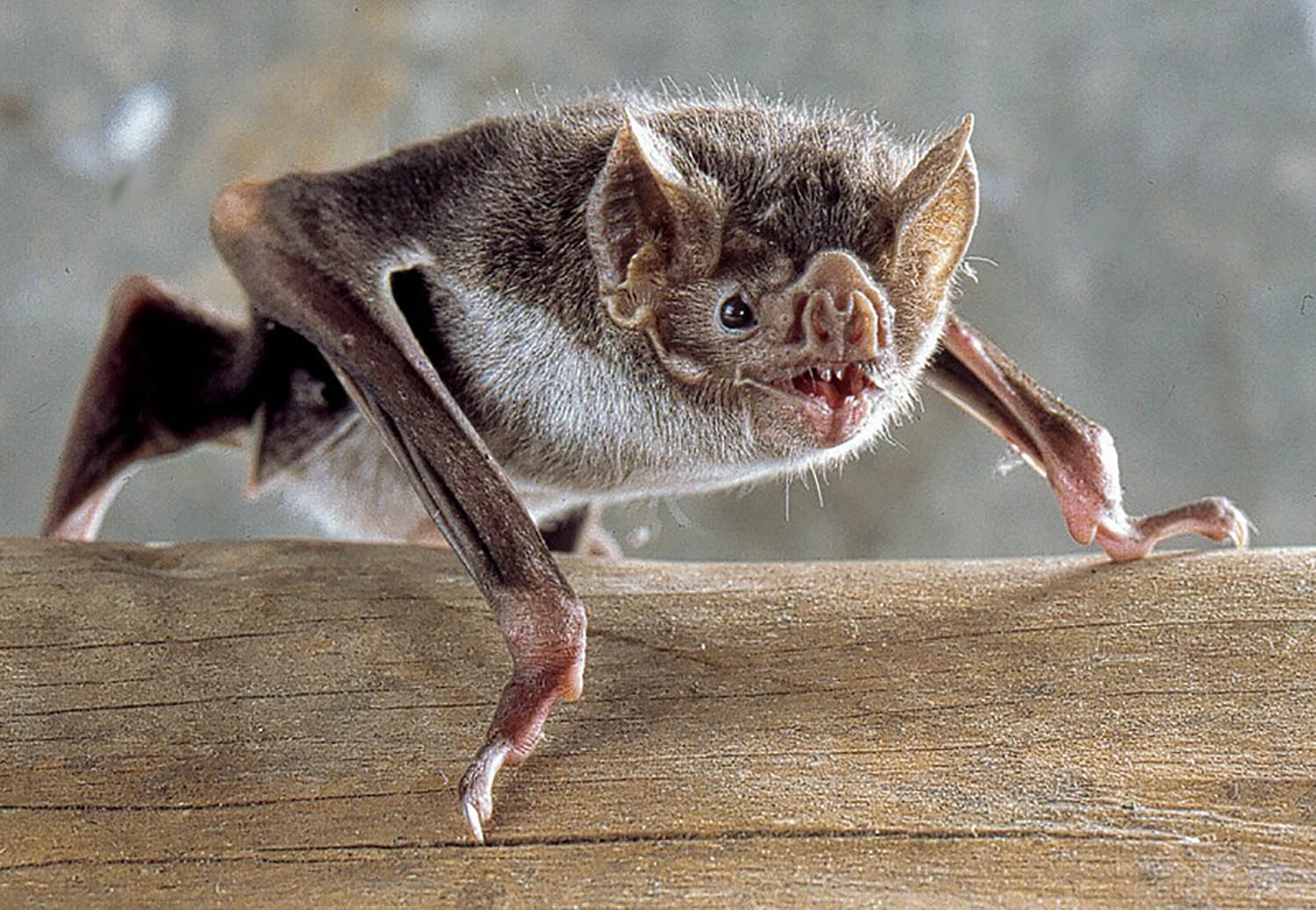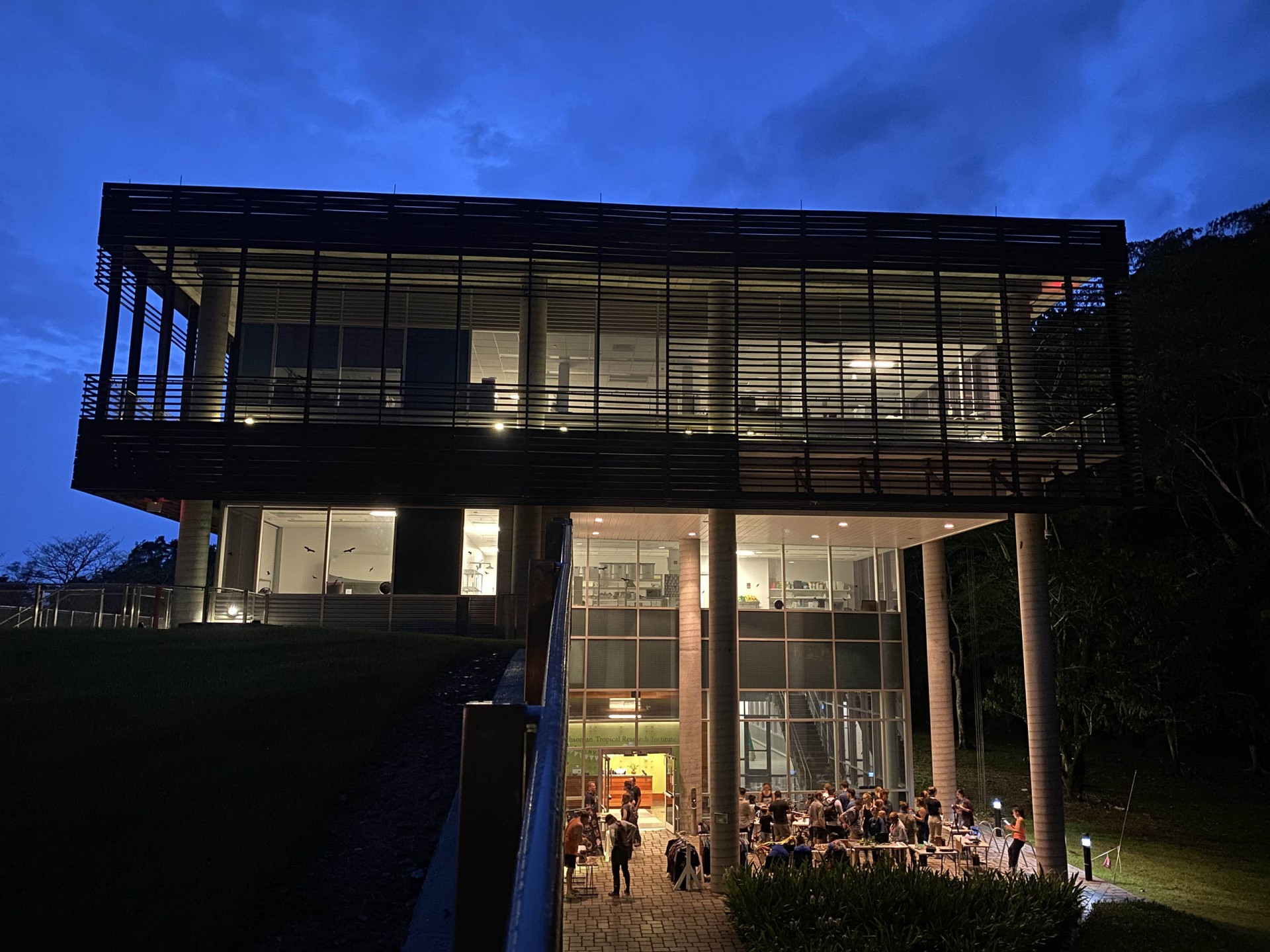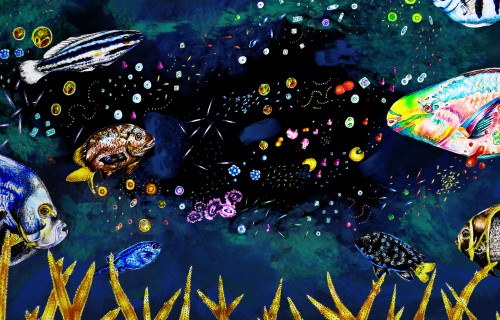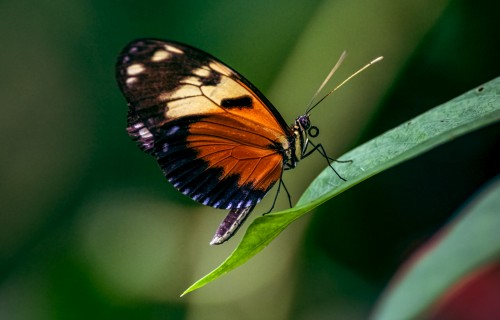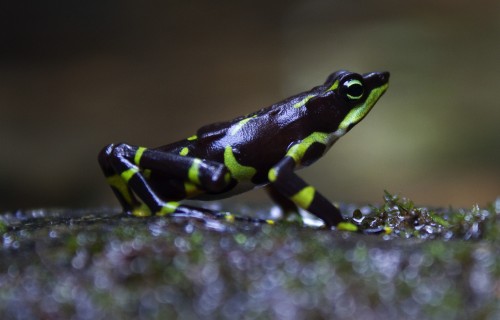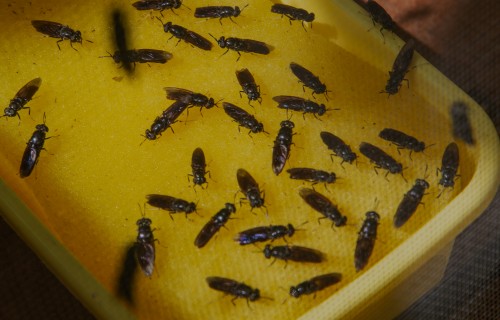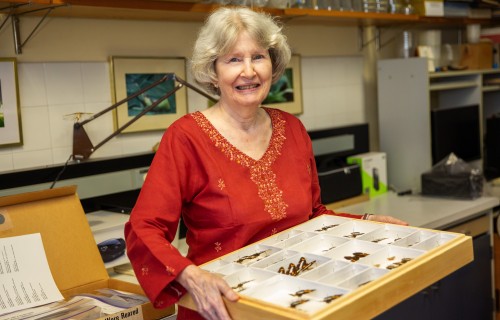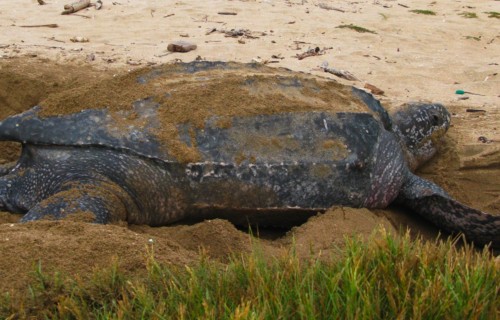Above the tropical forest canopy,
sensors capture the fluxes of gases
between the trees and the atmosphere
Gamboa
Bat Nights
Bilingual Bat Nights, Noches de Murciélagos, along the Panama Canal
Panama
By Olivia Milloway
The first Sunday of every month, residents and visitors join researchers from the Smithsonian Bat Lab to get a close-up look at Panama’s bats.
As the sun sets in Gamboa, Panama, bats begin their nightly hunt. Backlit by dusk’s blue-gray glow, they dive and duck, flickering in and out of view among the silhouettes of trees and bushes. When the bats come out, so do a group of researchers who study and love them, to throw a celebration in their honor–Bat Night (Noche de Murciélagos).
Bat Night is held the first Sunday of every month outside the Smithsonian laboratory in Gamboa, a community along the Panama Canal about thirty kilometers from Panama City. Led by principal investigator Rachel Page, the Smithsonian Tropical Research Institute’s Bat Lab has organized these bilingual public outreach events every month for nearly a decade. Gregg Cohen, the Page Lab’s research manager, has been participating in Bat Nights since he joined the group in 2018. He says their mission is simple: to “let people enjoy bats the way that we do.”
At a recent Bat Night, intern Melissa López González explained how she first became interested in bats. As a little girl in Chilibre, Panamá, she watched bats fly around her house at night and yearned to see them up close. López González’s childhood love of bats led her to research their sensory and cognitive ecology, or how bats perceive and make sense of the world around them. Specifically, she studies the behavior of Panama’s fishing bats, who use echolocation–sounds too high-pitched for humans to hear–to locate ripples in the water made by small fish.
For López González, Bat Nights are an important opportunity to share her love for bats and dismantle the misconceptions people have about them. Standing in front of a table full of bat-themed t-shirts, stickers, and posters (the proceeds from which fund fellowships for bat research), she explained, “Sometimes people think it’s better to kill the bats we study, so it’s important that we can teach people that bats aren’t dangerous.” Rather, López González wants to teach people the important roles bats play in maintaining healthy, balanced ecosystems–something that’s critical not just for environmental health, but for human health, too.
Imran Razik, a PhD student at The Ohio State University who studies vampire bats (and is the artist behind Bat Night’s posters and stickers), has been giving talks about bat biology and ecology at Bat Nights since 2019. Through these experiences sharing with the public, Razik has realized that he wants to make outreach an important part of his career going forward. Standing next to a carefully hand-painted sign pointing visitors towards the vampire bat table, he explained how his experience sharing about bats night after night has also helped him develop valuable communication skills. “The skills we’re developing can transfer so easily to other contexts: communications, science writing, museum curation, donor relations, all require skills we’re developing here at Bat Night.”
Headlamp strapped to her forehead, Page explained Bat Night’s origins; with the exception of closures due to the pandemic, Bat Night has been running every month since 2015. “We were getting a lot of requests for bat nights from the community, visiting school groups, and the general public.” Because bats are nocturnal, the Bat Lab’s research is primarily conducted at night, and so it became hard to accommodate the numerous visit requests. At a lab meeting, then-STRI Fellow Victoria Flores first voiced the idea for Bat Night–a regular, monthly event that field courses, families, tourists, or anyone interested in learning about bats could join. Together with STRI Fellow Gerry Carter, who launched the original Bat Night website (now hosted here), the event began to take shape. Page says that Bat Night is a team effort that has become an integral part of the lab culture over the years. “The group is really fantastic about putting Bat Night together month after month–I think everybody intrinsically wants to give back and share what they’re doing with the community,” said Page.
Visiting Bat Lab collaborators like Dr. Alex Trillo from Gettysburg College eagerly joined Bat Night. Trillo and her students study the relationship between fringe-lipped bats (Trachops cirrhosus), túngara frogs (Engystomops pustulosus), and hourglass tree frogs (Dendropsophus ebraccatus).
It’s important to Trillo that her students learn how to communicate their science to the general public. “Especially after the pandemic, it’s obvious how important science communication is,” she reflected. Trillo sees outreach opportunities like Bat Night as an important part of training her students to become the next generation of scientists. And, as they conduct their work in Panama, Trillo encourages her students to try to communicate in Spanish. “If you come to a country with a different language, you need to make an effort to communicate your science to the people who live there, in their language.” She sees the responsibility of the researcher to do outreach and science communication for the communities in the places they’re studying.
“The students might not be able to explain their entire research project in Spanish, but they can tell part of it here. It’s really important to me that they learn to do this, or at least try.” One of Trillo’s students, Arden Dowd, values Bat Night as an important part of her summer internship. “It would be pretty unfair, in my eyes, if we came in, did this research and collected this data, and didn’t share it.”
Over the years, the event has seen thousands of visitors from across Panama and around the world. That Bat Night, a young family from Panama City learned that bats can eat all sorts of things: nectar-eating bats help pollinate flowers, fruit-eating bats help disperse seeds, and insect-eating bats help control mosquito populations, which can reduce the transmission of diseases dangerous to humans. A group of tourists visiting from Madrid left Bat Night with a new appreciation for bats in their home country, learning that bats that live on every continent but Antarctica. And a group of visiting biology students from the US learned how vampire bats share food with their friends–a type of cooperation not often seen in nature.
Bats are one of the most diverse groups of mammals, with over 1,450 different species worldwide–a number that keeps going up–which makes Bat Night a learning opportunity for the researchers, too. “Every time I’m listening to other researchers tell their stories, I’m learning; there’s so much to know about bats, I’m never finished,” said Cohen. Andy Quitmeyer from the Digital Naturalism Lab (Dinalab) in Gamboa, agreed. He explained that, through the process of sharing knowledge with others, scientists learn their studies more deeply: “One reason outreach is important is because it makes you into a much better scientist.”
Page thinks that the diversity of knowledge and experience brought by Bat Lab students, postdocs, technicians, collaborators, and staff is what makes Bat Nights so special. “Together, all of us create this mosaic–we all have our own specific bits of knowledge, and combined, we are able to share a really good background on the ecology, evolution, and behavior of bats. And, it’s just really fun.”
Bat Night is held the first Sunday of every month from 6:30pm - 8:00pm at the Smithsonian Tropical Research Institute lab in Gamboa, Panama. To learn more about how you can attend this bilingual event, visit http://www.noseleaf.org/bat-night.html or email gamboabatnights@gmail.com.
STRI, headquartered in Panama City, Panama, is a unit of the Smithsonian. The institute furthers the understanding of tropical biodiversity and its importance to human welfare, trains students to conduct research in the tropics and promotes conservation by increasing public awareness of the beauty and importance of tropical ecosystems. Watch STRI’s video and visit the institute on its website and on Facebook, Twitter and Instagram for updates.
Cover photo: Victoria Flores and Sara Vásquez inspect a bat at Bat Night. Together with Gerry Carter, Victoria Flores, a former STRI Fellow, first suggested hosting regular events to share the excitement of bat research with the public.
Credit: Michael Le Chevallier

